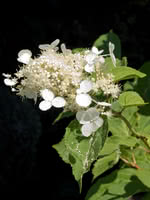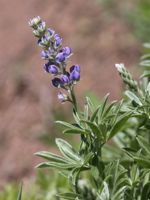Mon-Fri 9am - 5pm Mountain time
Panicle Hydrangea vs Silky Lupine
Hydrangea paniculata
Lupinus sericeus
CUSTOM GROW
CUSTOM GROW
Panicle Hydrangea is a large, broad-leaf, deciduous shrub that is prized for its ornamental appeal. It is easy to care for, long-lived, and cold-hardy.
Depending on the variety, its flowers change color throughout the blooming period. Make sure you water Panicle Hydrangeas regularly to achieve the most notable color change.
Silky Lupine is a native perennial wildflower known for its upright spikes of blue to violet flowers. Blooming from late spring into summer, the nectar-rich, showy blossoms attract a variety of pollinators, especially bees and butterflies. The plant’s fine, silky foliage provides soft texture and visual interest, enhancing landscapes throughout the growing season.
Silky Lupine is a nitrogen-fixing plant that enriches soils and supports surrounding vegetation. Its deep roots stabilize soil, and it spreads naturally by ejecting seeds from drying pods. If spread isn’t desired, new seedlings are easy to remove. While it is foraged by some wild animals, it contains alkaloids that are toxic to livestock. Silky Lupine is well-suited to pollinator gardens, naturalization plantings, erosion control, and ecological restoration projects.
Panicle Hydrangea Quick Facts
Silky Lupine Quick Facts
Toxicity: toxic to sheep and other livestock

